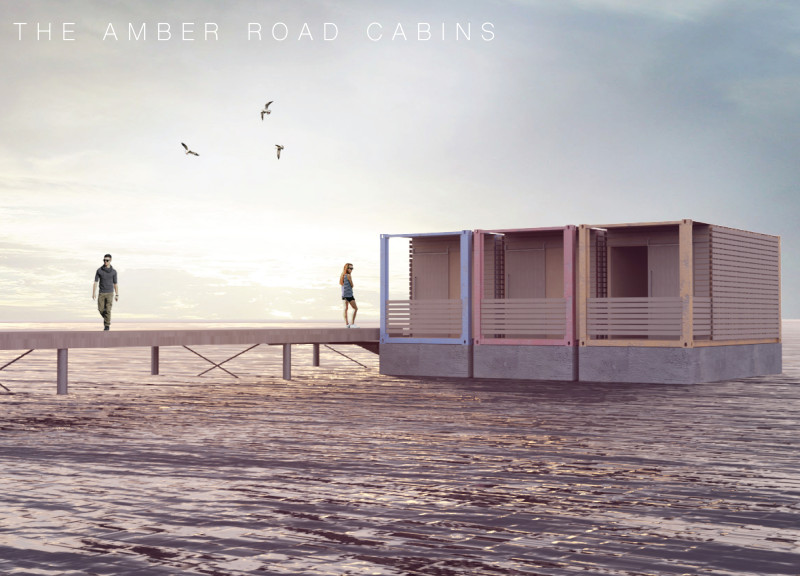5 key facts about this project
Modular Structure and Functionality
The architectural design presents a modular concept that allows for flexible configurations. Each cabin is arranged to provide efficient living spaces for up to four occupants, incorporating built-in storage options and communal areas. The use of recycled shipping containers as the primary material lends structural integrity while promoting environmental responsibility. Internally, the cabins feature functional layouts with bunk sleeping arrangements and minimalistic design aesthetics, maximizing usable space without compromising comfort.
This project's function extends beyond mere habitation. The cabins are designed to facilitate interaction with the surrounding environment, with outdoor communal areas connected to the cabins through a network of walkways and piers. This design approach not only fosters a sense of community among occupants but also emphasizes the relationship between architecture and nature.
Unique Design Approaches
The Amber Road Cabins are distinguished by their innovative use of materials and construction methods. Utilizing locally sourced wood for interior finishes, the intrinsic characteristics of both the shipping container and wood create a contrast that enhances the visual appeal while maintaining a connection to the natural environment. Furthermore, the project showcases a floating foundation system, developed to mitigate the impact of rising sea levels and potential flooding, which is a direct response to contemporary environmental challenges.
The project employs sustainable practices throughout, including energy-efficient features and low-impact development strategies. This multi-faceted approach to design prioritizes not only the immediate needs of inhabitants but also broader environmental considerations.
Integration with Local Environment
The cabins are strategically positioned to maximize views and access to the coastal landscape, enhancing the user experience while respecting the local ecosystem. The design ensures minimal disruption to the existing terrain, allowing for the preservation of native flora and fauna.
Exploring the architectural plans and sections of the Amber Road Cabins project reveals further details about its thoughtful design and execution. Insight into the architectural designs and ideas that informed this project illustrates a commitment to both functionality and environmental stewardship. For a comprehensive understanding of this project, readers are encouraged to review the architectural documentation and engage with the specifics of the design process and its outcomes.


























